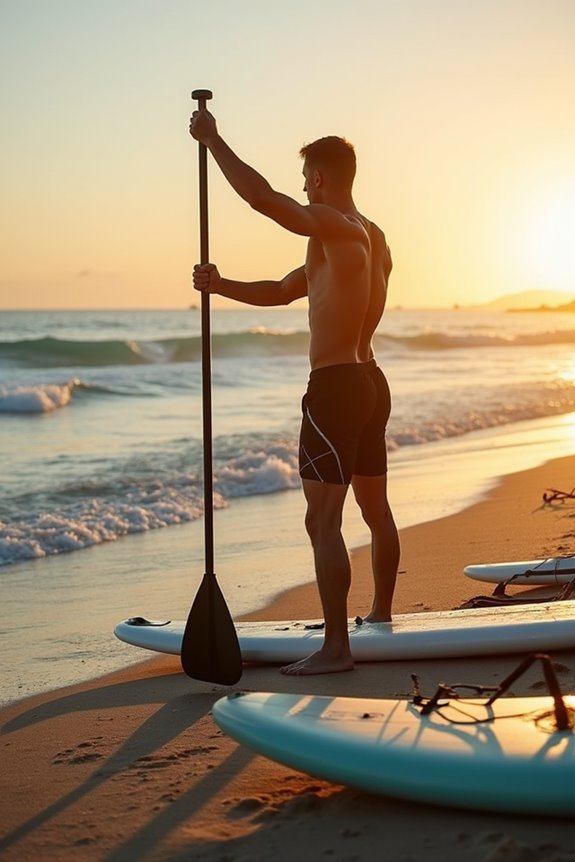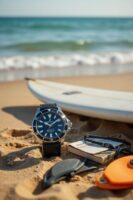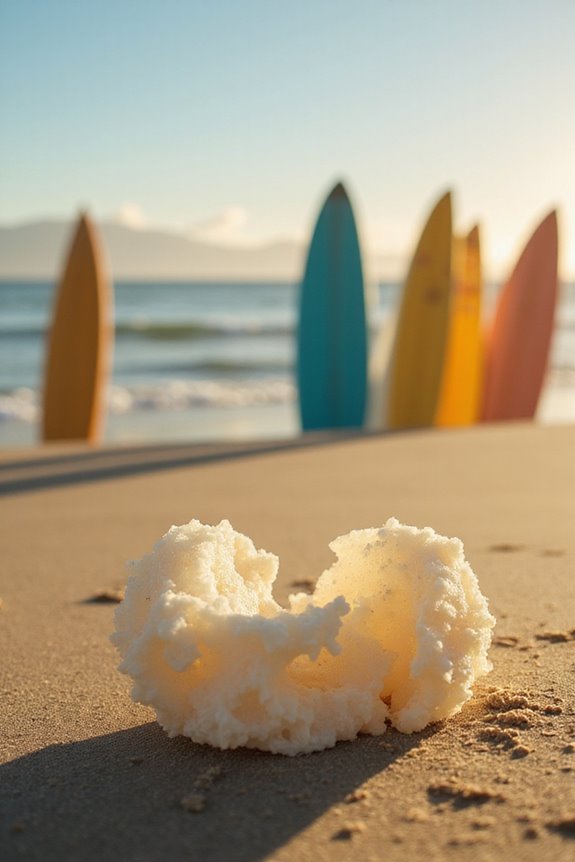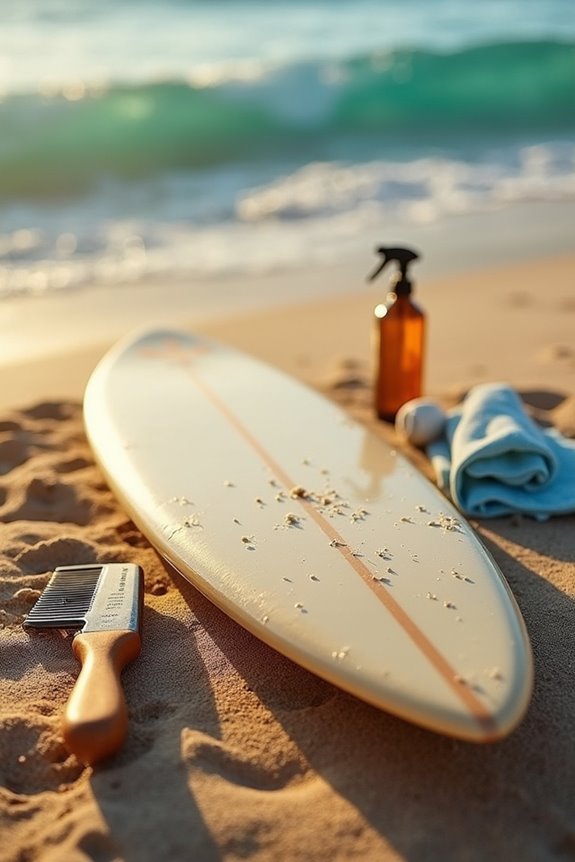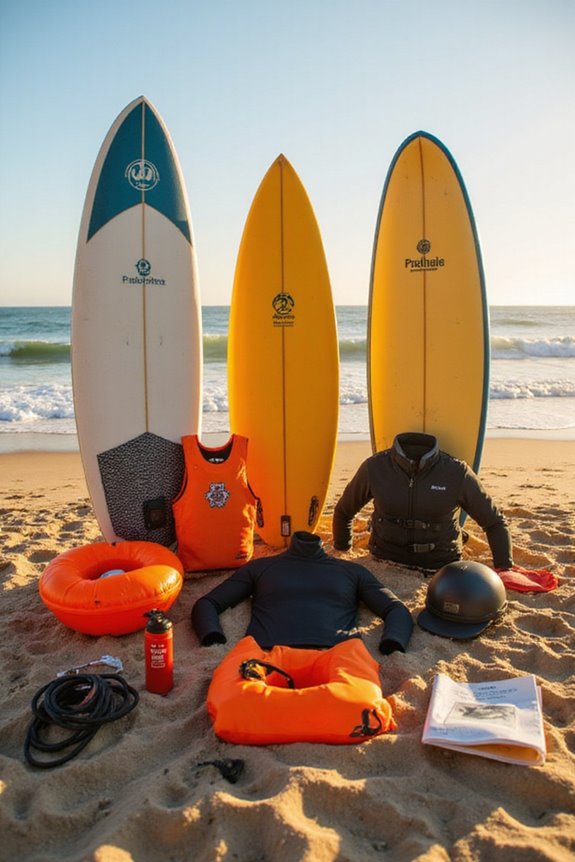To improve our shoulder strength for paddling, we should focus on specific exercises. We can perform standing external and internal rotations with resistance bands, complete three sets of 20 reps, and maintain elbow positions at our sides. It’s also important to strengthen opposing muscle groups through dips and push-ups, which helps balance muscle development. Incorporating core stability exercises will enhance overall power. These techniques not only boost strength but also prevent injuries. There’s more we can explore on optimizing our training.
Key Takeaways
- Perform standing external and internal shoulder rotations with resistance bands to strengthen rotator cuff muscles essential for paddling.
- Incorporate dips and push-ups to balance strength between anterior and posterior shoulder muscles, reducing injury risks.
- Engage in core strengthening exercises, like lat pull-downs, to enhance overall paddling power and posture.
- Include dynamic stretches, such as shoulder circles, to improve shoulder mobility and maintain elasticity during paddling.
- Strengthen scapular stabilizers with exercises like banded pull-aparts to ensure proper posture and minimize injuries while paddling.
Targeted Shoulder Strengthening Exercises
To improve our shoulder strength for paddling, we can incorporate targeted shoulder strengthening exercises that focus on key muscle groups. One effective method is performing standing external and internal shoulder rotations using resistance bands. We should keep our elbows fixed at our sides, bent at 90 degrees, while rotating our upper arms inward and outward against resistance.
Completing 3 sets of 20 repetitions, with brief rests, helps build endurance. Additionally, we can engage our rotator cuff by maintaining our upper arms horizontal and parallel to the floor during these shoulder rotations. This method not only enhances our shoulder stability but also prepares us for the demands of paddling, ensuring we maximize our performance on the water. Incorporating tools like balance boards can further enhance our core strength and stability, which are essential for effective paddling.
Balanced Muscle Development to Prevent Injury
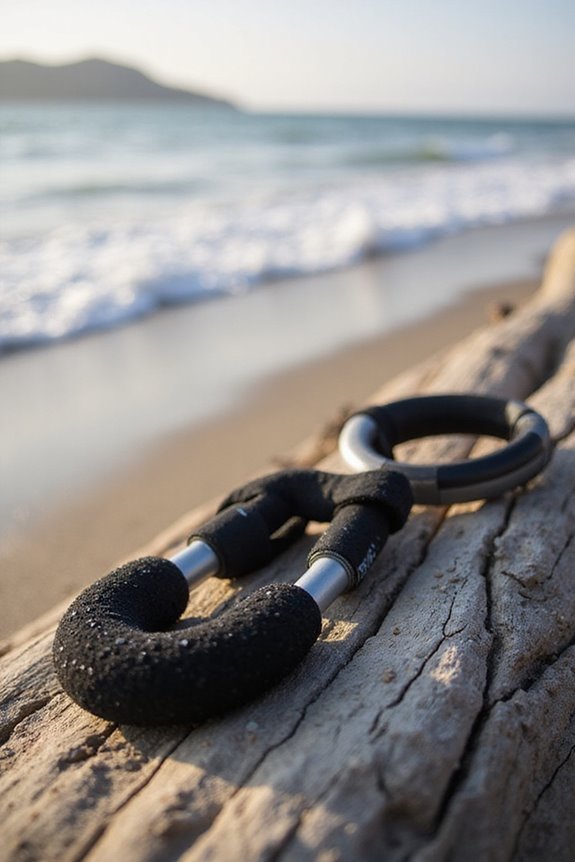
While we often focus on strengthening the muscles used during paddling, it’s essential to recognize the importance of balanced muscle development to prevent injuries. Muscle imbalances can lead to overdeveloped muscles overpowering smaller stabilizer muscles, compromising shoulder stability.
To maintain proper scapula positioning, we should balance strength between the anterior and posterior shoulder muscles. Incorporating exercises that target opposing muscle groups, like dips and push-ups, helps counteract the effects of paddling. This balanced training reduces the risk of common injuries, such as strains or rotator cuff tears. Additionally, understanding ocean dynamics can enhance your paddling efficiency and overall performance in surfing.
Core, Back, and Shoulder Conditioning for Paddling Power

Achieving paddling power hinges on the strength and coordination of our core, back, and shoulder muscles. Core stability is essential for effective paddling, as it allows us to generate power through twisting, bending, and stabilizing our trunks. Key core muscles include the rectus abdominis and obliques, which support rotation and stability. Back health is equally important, with the latissimus dorsi and erector spinae playing vital roles in shoulder stability and spinal rotation. Strengthening exercises like lat pull-downs and single-arm Romanian deadlifts can enhance our paddling posture and balance. Incorporating core strengthening workouts into your routine will further improve overall paddling performance.
Shoulder Mobility and Control Exercises
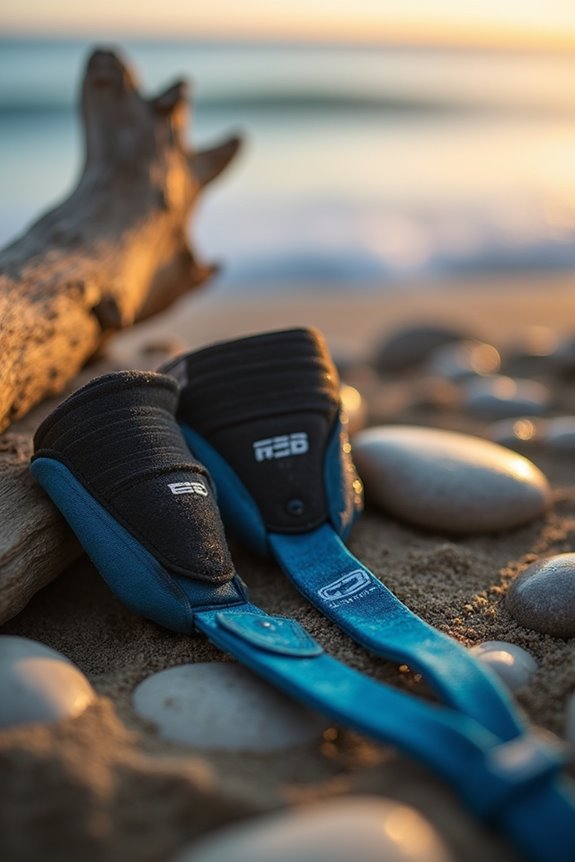
Shoulder mobility and control are fundamental components of effective paddling, complementing the strength gained from core and back conditioning. To enhance shoulder flexibility, we can incorporate dynamic stretches into our routine.
- Shoulder circles improve blood flow and joint lubrication.
- Dynamic arm swings (cross-body and overhead) help maintain elasticity in the shoulder capsule.
- Scapular mobility exercises promote smooth shoulder blade movement, essential for efficient paddling.
Additionally, performing controlled internal and external rotations with light resistance bands targets the rotator cuff, ensuring joint integrity and a full range of motion. By practicing these exercises regularly, we improve our overall shoulder mobility, which can greatly enhance our paddling performance. Incorporating safety features in your surfing accessories can also help prevent injuries while paddling.
Injury Prevention and Shoulder Stabilization
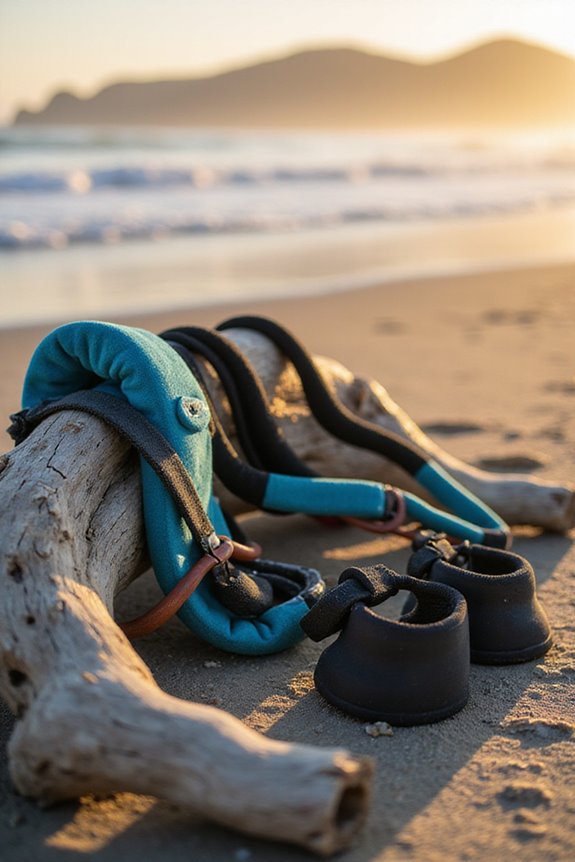
Injury prevention is essential for maintaining shoulder health during paddling activities. To achieve this, we need to focus on posture improvement and endurance training. Strengthening scapular stabilizers, such as the lower trapezius and rhomboids, improves shoulder positioning and reduces injury risk.
Effective exercises include:
- Banded Pull-Aparts: 1-2 sets of 10-15 reps to target the posterior rotator cuff.
- Prone Swimmers: 1-2 sets of 15-20 reps to promote scapular stability and thoracic extension.
- Rotator Cuff Rotations: 2-3 sets of 10 reps to enhance shoulder stability.
Additionally, maintaining proper posture during paddling helps minimize impingement and overuse injuries. By committing to these techniques, we can guarantee our shoulders remain strong and healthy. Incorporating yoga poses for surfers can further enhance shoulder flexibility and stability, supporting overall paddling performance.
Training Frequency, Volume, and Progression
When we plan our training for shoulder strength in paddling, it’s essential to take into account training frequency, volume, and progression to maximize effectiveness. We should aim for 3 to 4 training sessions per week, allowing a rest day in between for recovery. This consistency, ideally over 6-8 weeks, supports muscle development and endurance.
For volume, we can perform three sets of twenty repetitions, with short rest periods of 30 seconds to 1 minute. Incorporating a variety of exercises, including rotator cuff and deltoid movements, enhances muscle balance and endurance while keeping training intensity manageable. Additionally, focusing on proper fit in your wetsuit can improve your performance during paddling activities.
As we progress, we can gradually increase resistance or exercise complexity, ensuring we maintain proper form to prevent injuries.
Frequently Asked Questions
What Are the Signs of Shoulder Weakness in Paddlers?
When we notice shoulder pain or experience muscle fatigue after paddling, it’s often a sign of weakness. We should pay attention to any instability or difficulty maintaining control during strokes, indicating a need for improvement.
How Can I Incorporate Stretching Into My Shoulder Routine?
Like a tree swaying in the wind, we can incorporate static and dynamic stretches into our routine. Let’s blend arm swings with held positions, ensuring our shoulders stay flexible and strong for every paddling adventure.
Are There Specific Warm-Up Exercises for Shoulder Preparation Before Paddling?
For ideal shoulder preparation, we should include dynamic stretches like arm swings and use resistance bands for exercises such as external rotations. These enhance mobility and stability, making our paddling experience more effective and injury-free.
How Do I Know if I’M Overtraining My Shoulders?
We can recognize overtraining by monitoring shoulder fatigue and ensuring training balance. If we experience persistent soreness, decreased performance, or joint pain, it’s a sign we might need to adjust our training approach.
What Role Does Nutrition Play in Shoulder Strength Recovery?
We might think nutrition’s just a side note, but it’s vital for shoulder strength recovery. Nutritional supplements and hydration importance can’t be overlooked—they’re essential for optimizing muscle repair and reducing soreness after intense workouts.

